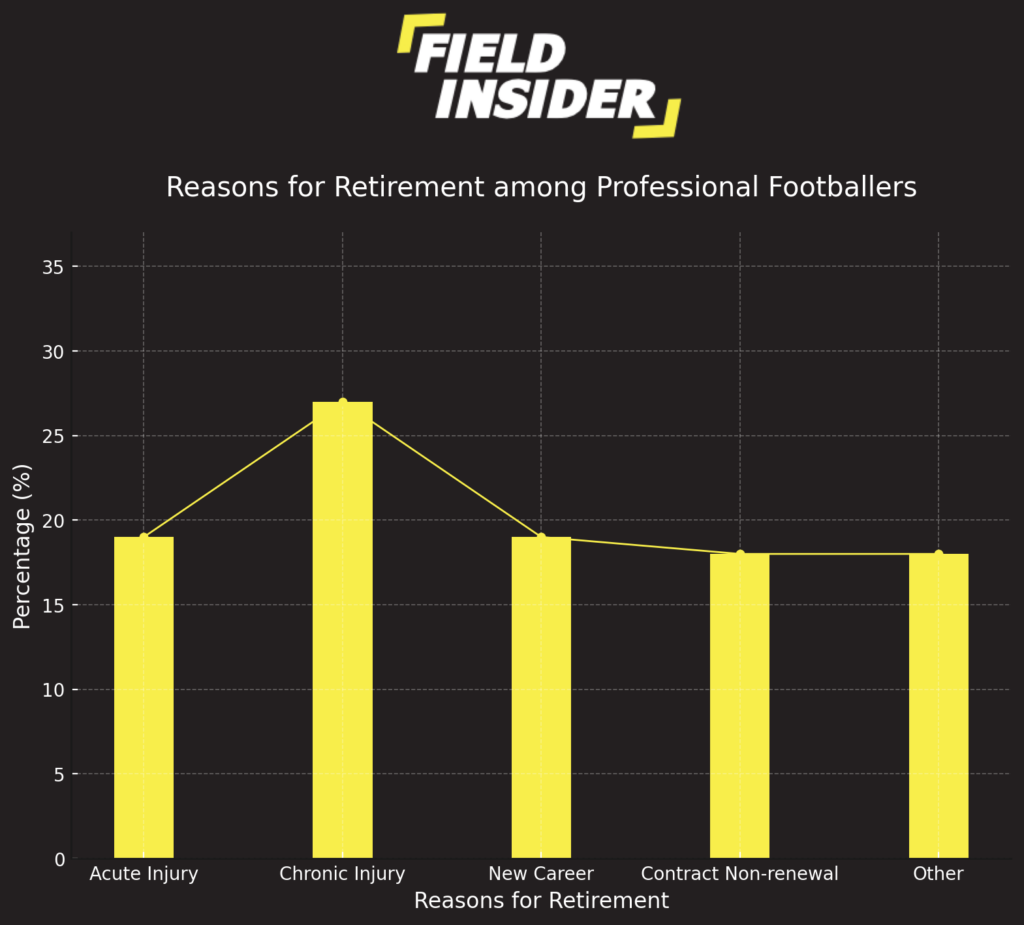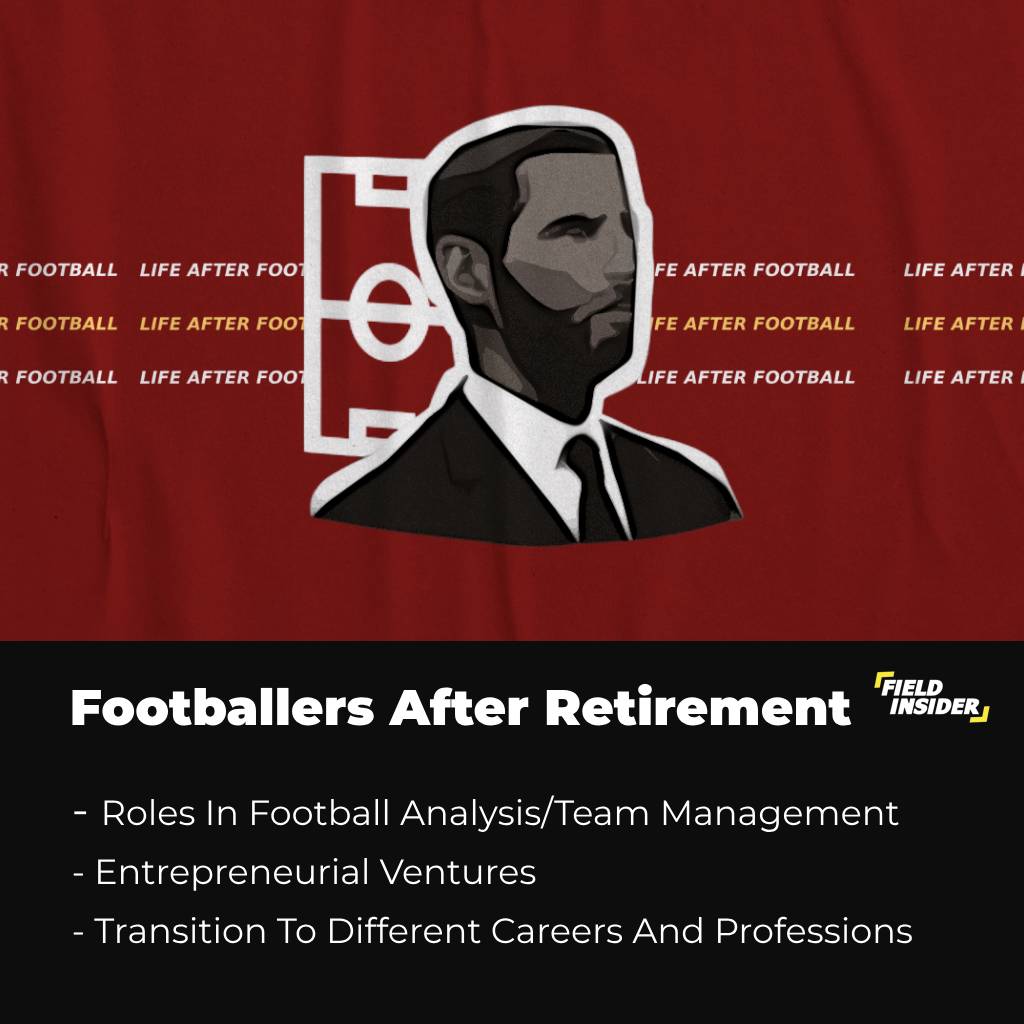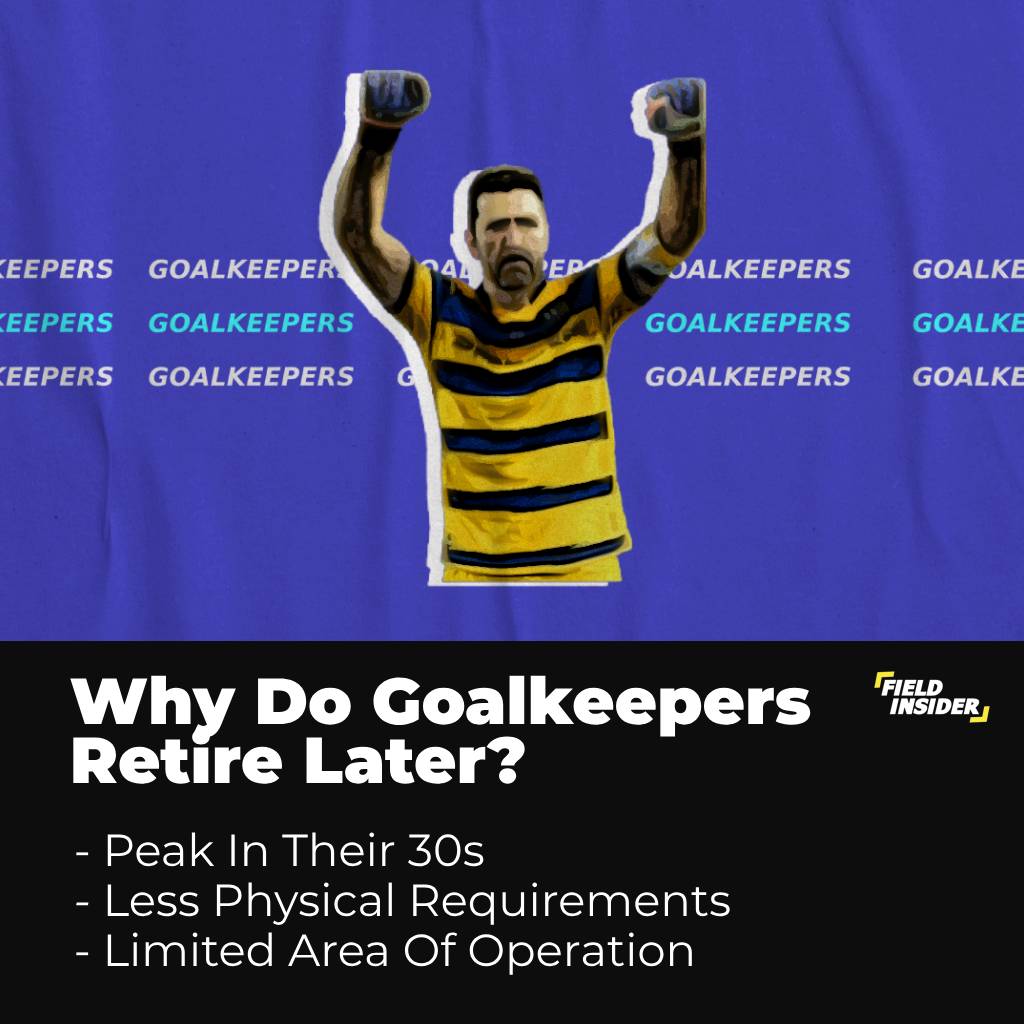Why Do Footballers Retire In Their 30s? In-Depth Analysis
Football has evolved significantly over time. Football today is far more difficult to play than it was in the 1980s and 1990s. This primarily refers to the game’s pace, as modern football is much faster than traditional football.
Soccer, the beautiful game, is a demanding career that requires peak physical fitness, a sharp mind, and unwavering passion. However, the harsh reality is that most professional players hang up their boots in their 30s.
Key Takeaways
| Key Takeaways | Explanation |
|---|---|
| Physical Limitations | Injuries and slower recovery times often signal the end of a player’s career. |
| Performance Peak | Most footballers reach performance peak in their late 20s. |
| Psychological Pressures | Stress and mental fatigue can lead to early retirement. |
| Tactical Evolution | Adapting to new styles and formations is tougher as players age. |
| Financial Planning | Effective financial management is crucial for life post-retirement. |
| New Beginnings | Retirement can lead to successful careers in other fields, leveraging skills learned in football. |
The Physical Toll
The physical toll of playing football at the highest level is immense and often underappreciated. Let’s break it down to understand better why it’s compared to waging a war against one’s body.
Demanding Physical Attributes
Soccer is not just a game of skill but also of physical prowess. Players are required to have exceptional speed, agility, strength, and endurance. They are constantly sprinting, jumping, tackling, and turning, which puts immense strain on their muscles and joints.

Age and Physical Decline
As players age, their physical capabilities naturally begin to decline. Their bodies don’t recover as quickly from the strenuous activity as they used to in their younger years. This slower recovery time means that it takes longer to bounce back from both games and training sessions, leading to a compounded effect on the body.
Injuries and Longevity
Injuries are an inevitable part of a footballer’s career. Repeated stress on the body can lead to chronic injuries, which become more challenging to heal as players age. For instance, a knee injury that might take a few weeks to heal in a player’s early 20s could take months in their 30s. Persistent injuries can thus signal the time for retirement.
Case Study: Cristiano Ronaldo
A prime example of managing the physical toll is Cristiano Ronaldo. Renowned for his extreme fitness regime and disciplined lifestyle, Ronaldo has managed to maintain his physical condition exceptionally well.
His meticulous attention to diet, recovery, and training has allowed him to perform at an elite level well into his 30s, defying the typical age-related decline. He embodies the ideal of how careful management of the body can prolong a footballer’s career. However, it’s crucial to note that such a level of maintenance is challenging and not typical for most players.
Sustainability and Performance
Maintaining peak physical condition is not just about sustaining performance levels but also about the longevity of a player’s career. While modern medicine and fitness regimes have advanced, allowing players to extend their careers, the natural decline in physical prowess due to age is inevitable.
Summary
In summary, the physical toll of professional soccer is a critical factor in a player’s career lifespan. The constant physical demands, coupled with age-related decline and injury risks, play a significant role in determining when footballers might retire.
Exceptional cases like Cristiano Ronaldo highlight the possibility of extending a career through meticulous physical care, but for the majority, the physical demands of the sport eventually take their toll, leading to retirement in their 30s.
reasons Why Footballers retire: A Study
An anonymous self-administered questionnaire was distributed to 500 former players registered with the English Professional Footballers’ Association. The research was based on the responses of former footballers which are presented in the following graphs;

The bar chart presents the distribution of the main reasons for which professional footballers retire. Here’s the information depicted by the chart:
- Acute Injury: This was a reason for retirement for 19% of the respondents. It’s visualized by the first bar on the left.
- Chronic Injury: The most common reason given, with 27% of the players stating it as their reason for retirement. This is the highest bar on the chart.
- New Career: Equal to acute injuries, 19% of the players retired to start a new career. This is the third bar from the left and is of the same height as the first bar.
- Contract Non-renewal: Close to the other reasons, 18% of players retired due to their contracts not being renewed. This is the second to last bar.
- Other: Also at 18%, this category includes reasons not specified in the survey and is the last bar on the chart.
Peak Performance
The concept of peak performance in football is both intriguing and complex. Typically, footballers hit their prime between the ages of 27 to 29. This period represents a sweet spot where their physical abilities, experience, and tactical understanding of the game converge.
Maturity and Experience
By this age, players have accumulated significant experience. They’ve adapted to the highest levels of competition and pressure, and their understanding of the game is at its peak. This experience allows them to make smarter decisions on the field, anticipate plays better, and use their skills more effectively.
Physical Capabilities
At their late 20s, most footballers are at the height of their physical powers. They have the optimal blend of speed, endurance, strength, and agility. Their bodies are fully developed, yet not yet significantly impacted by the wear and tear that comes with age.
In today’s football, you have no room to improvise. It requires a high level of preparation and fitness. Furthermore, as the players get older, their injuries heal at a slower rate. Injured players are unable to respond to the coach’s tasks or the game schedule that today’s football necessitates.
Onset of Decline Post-30
Post-30, players often begin to experience a decline in these physical attributes. Recovery times from both injuries and intense matches increase, and their ability to perform at the highest level consistently starts to decline.
This natural decline is a result of the aging process and is often accelerated by the cumulative impact of injuries and the intense physical demands of the sport.
The Role of Experience and Tactical Acumen
While physical attributes might decline, the value of experience and tactical knowledge should not be underestimated. Older players bring a level of understanding and strategic thinking to the game that can be invaluable, especially in high-stakes situations.
Adaptation and Longevity
Some players adapt their style of play as they age to compensate for the decline in physical prowess. They may rely more on their mental attributes, positional sense, and experience, which can help prolong their careers.
Team Dynamics
Seasoned veterans contribute significantly to team dynamics. Their leadership and experience can be crucial in guiding younger players and influencing the overall performance and morale of the team.
In conclusion, the peak performance age in soccer is a blend of physical prowess and matured skill set. While physical decline post-30 is a natural process, the strategic and mental aspects that seasoned players bring to the game remain invaluable.
Mental and Emotional Factors
The mental and emotional aspects of professional football are as taxing, if not more so, than the physical demands. Players at the top level are under constant pressure to perform at their best, facing intense scrutiny from fans, media, and their own teams.
This relentless expectation to excel in every match and training session creates a high-stress environment. The psychological load of maintaining top form, dealing with the highs and lows of wins and losses, and the continuous public and media attention can lead to mental fatigue.

Over time, this constant state of mental alertness and pressure can wear down even the most resilient players. Furthermore, motivation and passion, which are the driving forces behind any athlete’s success, can start to diminish over time.
The repetitive nature of training, the routine of matches, and the ongoing pressure can lead to a feeling of burnout. This is especially true for players who have been in the professional circuit for a long time.
The joy and excitement that initially drove them to the sport can diminish , making it harder to find the same level of enthusiasm and energy. These factors, along with the constant media scrutiny, can drive players towards retirement.
Evolving Tactics and Strategies
Football is ever-evolving, with new tactics like the 3-4-3 formation or the 4-3-3 formation coming to the fore. Older players must adapt or get left behind. This constant need for adaptation is a challenge that not all can meet as they age.
The evolution of tactics and strategies in football is a relentless process, continually shaping and reshaping the way the game is played. This evolution presents a significant challenge to players, especially those in the later stages of their careers.
Rapid Tactical Evolution
In modern football, tactical innovations emerge rapidly. New formations and styles of play have transformed how teams approach both offense and defense. Players must constantly learn and adapt to these evolving strategies to remain relevant and effective in their teams.
Adaptability Challenges for Older Players
For older players, adapting to these new tactics can be particularly challenging. As the game evolves, the physical and mental demands also change. A formation like the 3-4-3, for instance, requires high levels of stamina and tactical awareness, which might be more challenging for an older player to sustain over the course of a match.
The Need for Continuous Learning
The constant evolution in soccer tactics requires players to be lifelong learners of the game. They need to stay updated with the latest strategies and be able to execute them effectively on the field.
This continuous learning curve can be steep for older players, especially those who may find it harder to unlearn established patterns and adapt to new ones.
Mental Agility
Beyond physical capabilities, the tactical evolution of football demands mental agility from players. They must be able to think quickly, make split-second decisions, and understand the dynamics of new playing styles.
This mental agility is crucial for older players to compensate for any physical decline they may be experiencing.
Conclusively, those who can keep pace with these changes can continue to contribute significantly to their teams, while those who can’t may find themselves contemplating the end of their playing days sooner than expected.
Financial Considerations
The financial aspects are also crucial. Many players ensure they have a nest egg for retirement, considering the football contracts aren’t forever. Planning for life after soccer is crucial, as a player’s career on the pitch is relatively short-lived compared to other professions.
Short Career Span
The average footballer’s career is significantly shorter than that of professionals in other fields. While peak earning years in football can be lucrative, especially for top-tier players, this period is short.
Players must maximize their earnings during these peak years while preparing for a future where their primary source of income – playing football – will no longer be available.
Diverse Income Streams
Many players diversify their income streams as a way to secure financial stability. This can include endorsement deals, investments in businesses, or media appearances. These alternative income streams can become crucial once footballers retire from playing professionally.
Retirement Planning
Effective retirement planning is about more than just saving money. It involves strategizing how to maintain a certain lifestyle post-retirement, considering factors like health insurance, long-term investments, and potential career paths post-football.
This planning often starts early in the playing career to ensure a smooth transition once footballers retire.
Post-Career Opportunities
Preparing for life after football also includes exploring post-career opportunities. This could be coaching, sports commentary, business ventures, or other fields unrelated to football. Building skills and networks in these areas while still playing can ease the transition into a new career after retirement.
Life After Football
When footballers retire, new avenues often open. Education and skill development during their playing days can lead to a successful post-football career. Stories of footballers who transitioned into different fields can be both inspiring and a blueprint for current players.

Education and Skill Development
Players who invest in education and skill development during their active years are better prepared for post-retirement life.
This might include acquiring coaching certifications, learning business management, or media training, paving the way for roles in football analysis, team management, or entrepreneurial ventures.
Transition to New Careers
Post-retirement, many former players explore careers that align with their passions or interests outside soccer. The discipline, teamwork, and leadership skills developed on the field can be valuable in various professional settings, including business, media, or even completely new industries.
In short, when footballers retire, doesn’t signify an end but a transition to new beginnings, with numerous possibilities for growth and success in various fields.
Why do Goalkeepers Retire Later than Other Footballers do?
It is a well-known saying that goalkeepers, like wine, get better with age. Goalkeepers mature in their thirties, whereas footballers retire at 30 and are mature in their twenties. The goalkeeper has the longest career of any position on the football team.
There are numerous examples of top goalkeepers who have defended or continue to defend in their forties, and the caliber of their performances has never dipped.
limited area of operation
The space in which the goalkeeper operates gives them an advantage over other players. When football players reach their thirties, they lose speed and thus are unable to perform the tasks required by modern football.
Furthermore, their muscles, knees, and joints are heavily used during their career, resulting in lower performance than previously. There is a significant consumption of strength that is directly related to the game they offer.

reflexes & positioning
To begin with, goalkeepers in their thirties gain experience. An experienced goalkeeper knows how to position himself, what angles to cover, how to get to the center kick, and when to calm the game down.
Unlike other football positions, even though they wear out their joints, knees, and muscles, this does not have a significant impact on their game. The reflex and the speed with which they move are the most important.
The goalkeeper will only run a few times during the game, so the fact that their muscle mass is deteriorating has little effect on them. However, the skills required of a goalie must be constantly refined
Conclusion
Footballers retire in their 30s mainly due to physical, mental, and financial factors, amongst others.
As we witness the careers of current greats winding down, it’s essential to acknowledge the complexities they face when deciding to step away from the game they love. Footballers’ careers may be limited, but their legacies are eternal.








